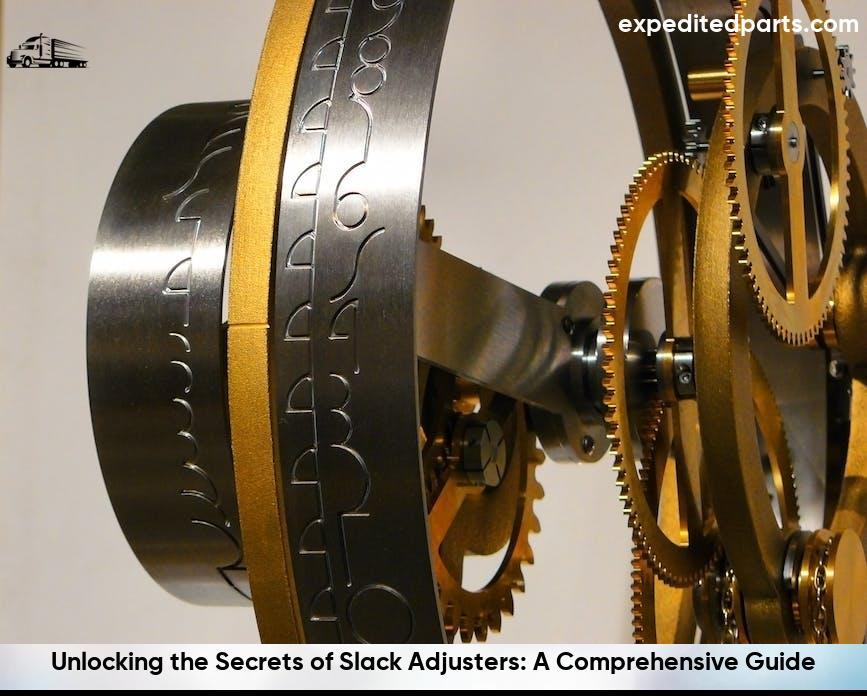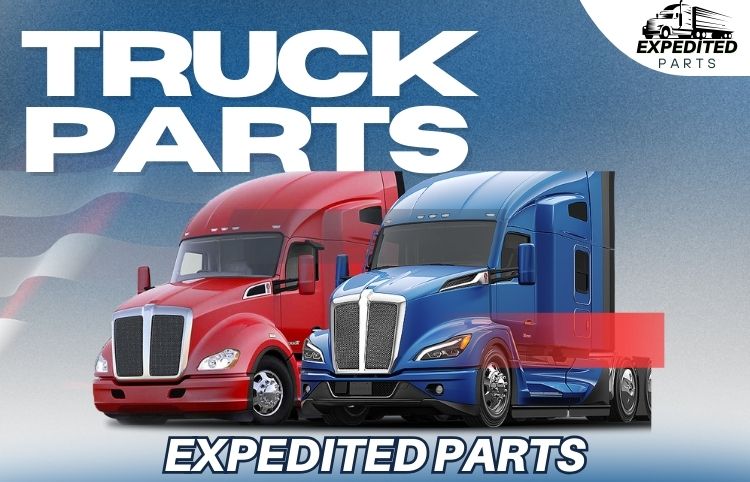Slack adjuster is a crucial component in the braking system of vehicles, particularly in heavy-duty trucks and buses. It plays a vital role in ensuring the efficient and safe operation of the brakes. The slack adjuster is responsible for maintaining the proper clearance between the brake shoes and the brake drum, thereby optimizing braking performance. By automatically adjusting the brake shoe position as the brake linings wear down, it helps to prevent excessive brake shoe travel and ensures consistent and reliable braking. With its ability to compensate for wear, the slack adjuster helps to extend the lifespan of the braking system and enhance overall vehicle safety on the roads.

Unlocking the Secrets of Slack Adjusters: A Comprehensive Guide
In the world of brake systems, slack adjusters play a crucial role in ensuring optimal performance and safety. Often overlooked, these small yet mighty components are responsible for maintaining the proper tension and adjustment of the brake shoes and drums.
Here are some key points to help you unlock the secrets of slack adjusters:
- Function: Slack adjusters are mechanical devices used to compensate for the wear and tear that occurs over time in a brake system. They help to keep the brake shoes in proper alignment with the drums, ensuring effective braking performance.
- Types: There are two main types of slack adjusters – manual and automatic. Manual slack adjusters require periodic manual adjustment, while automatic slack adjusters automatically adjust the tension as needed, reducing the need for constant maintenance.
- Components: A slack adjuster consists of various components, including an adjusting bolt, pawl, yoke, and pushrod. These components work together to engage the brake shoes with the drum, applying the necessary force for braking.
- Maintenance: Proper maintenance and inspection of slack adjusters are essential to ensure optimal performance. Regular checks for wear, proper lubrication, and adjustment are necessary to prevent brake system failure and ensure passenger and driver safety.
Understanding the secrets of slack adjusters is crucial for anyone involved in the maintenance and operation of brake systems. By following proper maintenance practices and staying vigilant for signs of wear, you can ensure the safety and longevity of your brake system.
The Essential Role of Slack Adjusters in Brake Systems: Everything You Need to Know
Slack adjusters are a critical component in brake systems, providing the necessary tension and adjustment for optimal braking performance. Whether it’s in commercial vehicles, trains, or industrial machinery, slack adjusters play an essential role in ensuring safety and reliability.
Here’s everything you need to know about slack adjusters:
- Function: Slack adjusters are responsible for compensating for the natural wear and tear that occurs in brake systems. They ensure that the brake shoes maintain optimal contact and alignment with the drums, allowing for efficient braking.
- Types: There are two main types of slack adjusters – manual and automatic. Manual slack adjusters require periodic manual adjustment, while automatic slack adjusters self-adjust as needed, reducing the need for constant maintenance.
- Components: Slack adjusters consist of several components, including an adjusting bolt, pawl, yoke, and pushrod. These components work together to engage the brake shoes with the drum, generating the necessary braking force.
- Maintenance: Regular maintenance and inspection of slack adjusters are crucial to ensure optimal performance. It’s important to check for wear, properly lubricate, and adjust as needed. Proactive maintenance can prevent brake system failures and potential accidents.
- Signs of Wear: As slack adjusters age, they may show signs of wear. Some common signs include longer braking distances, squealing noises, uneven braking, or a mushy brake pedal. Recognizing these signs and taking appropriate action is necessary for safe and reliable braking.
Understanding the essential role of slack adjusters in brake systems is important for anyone involved in their maintenance or operation. By keeping them properly maintained and being aware of signs of wear, you can ensure a safe and efficient braking system.
Here are some key steps to follow:
- Lubrication: Apply lubricant to the moving parts of the slack adjusters to reduce friction and ensure smooth operation. Use a high-quality lubricant that is recommended by the manufacturer.
- Adjustment: Adjust the slack adjusters to maintain the proper amount of brake shoe-to-drum clearance. This can be done by either manually adjusting the slack adjusters or using an automatic slack adjuster tool.
- Alignment: Ensure that the slack adjusters are properly aligned with the pushrod and brake housing. Misalignment can cause uneven wear and improper braking.
- Testing: After making any adjustments, conduct a thorough brake test to ensure that the brakes engage and release smoothly and evenly.
By following these maintenance and adjustment procedures, you can ensure that your slack adjusters are functioning at their best, optimizing the braking efficiency and overall safety of your vehicle.
Slack Adjusters 101: Understanding the Basics and How They Impact Vehicle Safety
Slack adjusters are vital components in air brake systems and play a crucial role in ensuring vehicle safety. Understanding the basics of slack adjusters and their impact on braking performance is essential for anyone operating or maintaining vehicles equipped with air brakes. This article will provide an overview of slack adjusters, their functions, and their significance in vehicle safety.
| Key Points | Description |
|---|---|
| Function | Slack adjusters are responsible for maintaining the proper clearance between the brake shoes and the brake drum. They adjust to compensate for brake shoe wear, ensuring consistent and reliable braking. |
| Impact on Performance | Properly adjusted slack adjusters are critical for optimal braking performance. If the slack adjusters are not adjusted correctly, they can lead to reduced braking power, increased stopping distance, and potential brake failure. |
| Inspection and Maintenance | Regular inspection and maintenance of slack adjusters are essential for ensuring their proper functioning. This includes checking for wear, damage, and proper lubrication. |
| Compliance with Regulations | Properly functioning slack adjusters are required by law in many jurisdictions. Vehicles with defective or improperly adjusted slack adjusters may fail safety inspections and face potential penalties. |
| Training and Education | Operators and maintenance personnel should receive proper training and education on slack adjusters. They should understand the importance of regular inspection, adjustment, and maintenance to ensure vehicle safety. |
By having a solid understanding of slack adjusters and their role in vehicle safety, operators and maintenance personnel can take the necessary steps to ensure that slack adjusters are properly maintained, adjusted, and comply with regulations, resulting in safe and reliable braking performance.
Improving Brake Performance with the Right Slack Adjuster: A Must-Know for Fleet Managers
When it comes to ensuring the safety and efficiency of your fleet vehicles, brake performance holds immense importance. One crucial component that plays a significant role in brake performance is the slack adjuster. Choosing the right slack adjuster can make a world of difference in improving brake performance and ensuring smooth operations for your fleet.
Here are some key reasons why fleet managers must pay attention to the slack adjuster:
- Enhanced Brake Responsiveness: The slack adjuster acts as a linkage between the brake chamber pushrod and the foundation brake. By selecting the appropriate slack adjuster with the correct stroke length, fleet managers can ensure optimal brake responsiveness, improving overall stopping power.
- Compliance with Brake Regulations: Using the correct slack adjuster is essential to meet safety and regulatory standards. Choosing the wrong adjuster can result in brake violations during inspections, potentially leading to fines and penalties.
Fleet managers should prioritize regular inspection and maintenance of slack adjusters to keep brakes in optimal condition. By understanding the significance of choosing the right slack adjuster, you can improve brake performance, reduce maintenance costs, and ensure the safety of your fleet and drivers.
Safety First: The Importance of Regularly Inspecting and Adjusting Slack Adjusters
When it comes to fleet vehicle safety, regular inspection and adjustment of slack adjusters should be a top priority for fleet managers. Slack adjusters play a critical role in maintaining proper brake operation and ensuring the overall safety of your fleet.
Here are key reasons why regularly inspecting and adjusting slack adjusters is crucial:
- Optimal Brake Performance: Inspecting and adjusting slack adjusters ensures that the braking system functions at its best. Properly adjusted slack adjusters help maintain the correct brake shoe-to-drum clearance, which is essential for efficient braking and optimal performance.
- Prevention of Brake System Failures: Regular inspections can detect any signs of wear, damage, or malfunction in slack adjusters. Timely adjustments and repairs can prevent potential brake system failures, reducing the risk of accidents and ensuring the safety of your fleet.
- Compliance with Safety Regulations: Inspecting and adjusting slack adjusters helps ensure compliance with safety regulations. Adhering to these regulations is crucial for avoiding penalties, liability issues, and maintaining a positive reputation for your fleet.
Make it a top priority to schedule regular inspections and adjustments for the slack adjusters in your fleet. By prioritizing safety through proactive maintenance, you can enhance brake performance, reduce the risk of accidents, and ensure the well-being of your fleet drivers and vehicles.


